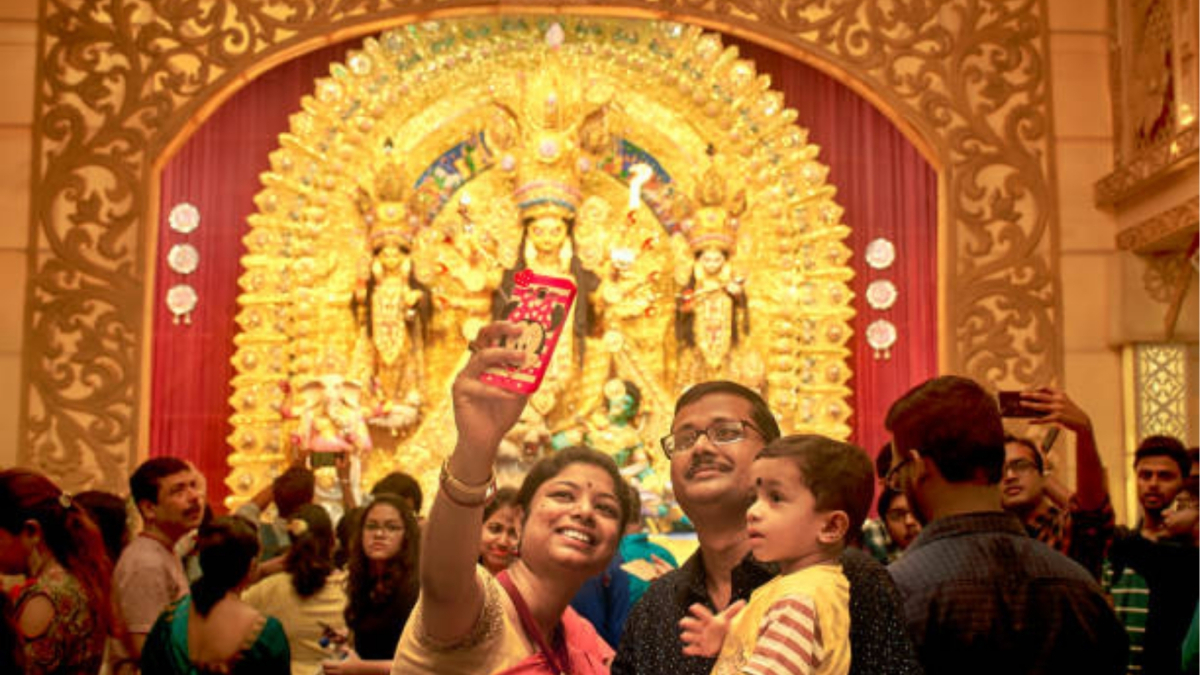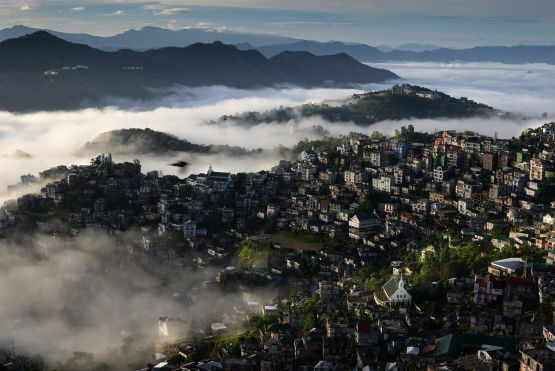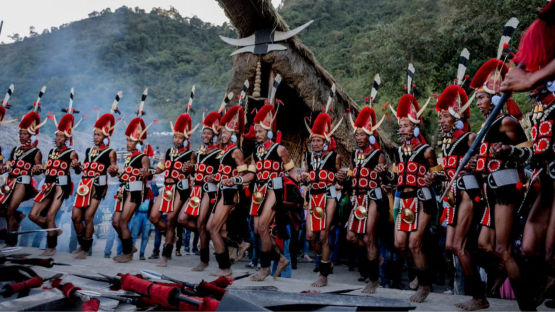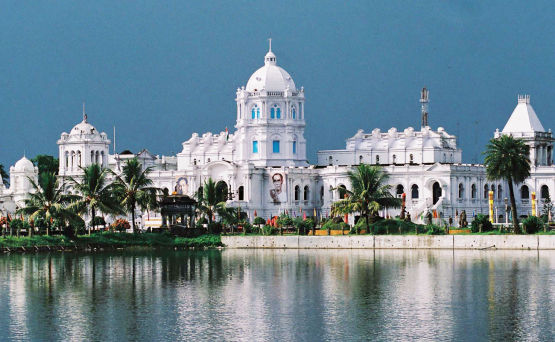Arunachal Pradesh

Losar:
Celebrated by the Monpa tribe, Losar is the Tibetan New Year festival, marking the beginning of the lunar calendar. It usually falls in February or March and is a time of feasting, dancing, and religious rituals. Monasteries are adorned with colorful decorations, and traditional Cham dances (masked dances) are performed to ward off evil spirits. The festival lasts for several days and includes activities such as burning incense, offering prayers, and making traditional dishes like Thukpa and Momos.
Ziro Festival of Music:
Held in the picturesque Ziro Valley, this four-day outdoor music festival takes place in September and has gained international recognition. The festival brings together independent musicians from across India and abroad, featuring a mix of folk, indie, rock, and fusion music. Set amidst lush green rice fields and misty hills, the festival offers a unique experience of music, nature, and local Apatani culture, making it a must-visit for music enthusiasts.


Myoko Festival:
Celebrated by the Apatani tribe in March, the Myoko Festival is a unique tribal celebration of friendship, prosperity, and fertility. The festival involves elaborate ceremonies, including animal sacrifices, chanting of prayers, and traditional dance and music performances. It is a time for the Apatani people to renew social bonds and foster communal harmony, with rituals invoking the spirits for prosperity and protection against evil forces.
Assam
Rongali (Bohag) Bihu:
Celebrated in April, Rongali Bihu marks the Assamese New Year and the onset of the sowing season. It is characterized by joyous festivities, including the traditional Bihu dance, folk songs, feasts, and community gatherings. The celebrations reflect the spirit of Assam, with people wearing traditional attire and participating in various cultural activities.


Bhogali (Magh) Bihu:
Observed in January, Bhogali Bihu is a harvest festival that celebrates the end of the harvesting season. The festival is marked by community feasts, bonfires (Meji), and traditional games. People prepare various traditional Assamese dishes to celebrate the bountiful harvest,with community gatherings around the bonfire for singing and dancing.
Kongali (Kati) Bihu:
Celebrated in October, Kongali Bihu is a more somber affair compared to the other two Bihus. It is a time for prayer and reflection, marked by the lighting of lamps (Diyas) in the fields and homes to guide the spirits and protect the crops.


Ambubachi Mela:
The Ambubachi Mela, held annually in June at the Kamakhya Temple in Guwahati, is one of the most significant religious festivals in Assam. It marks the annual menstruation period of the goddess Kamakhya, associated with fertility rituals. The temple remains closed for three days, reopening with great fanfare on the fourth day, attracting thousands of devotees, sadhus, and pilgrims from across the country.
Manipur
Sangai Festival:
Held every November, the Sangai Festival is named after the Sangai deer, an endangered species found only in the Keibul Lamjao National Park. The festival celebrates the cultural diversity and natural beauty of Manipur, featuring traditional dance performances like the Manipuri Raas Leela, indigenous martial arts such as Thang-Ta, handloom and handicraft exhibitions, and local cuisine. It also includes adventure sports like trekking, white-water rafting, and parasailing.


Shirui Lily Festival:
Celebrated in Ukhrul district, the Shirui Lily Festival is dedicated to the state flower, Shirui Lily (Lilium Mackliniae), found only in the Shirui Hills. The festival, held annually in May, promotes awareness about the conservation of the endangered flower and celebrates the region's natural beauty. It features cultural performances, traditional games, music concerts, and exhibitions showcasing local arts and crafts.
Meghalaya
Wangala Festival:
Also known as the "100 Drums Festival," the Wangala Festival is a harvest festival celebrated by the Garo tribe in November. It marks the end of the agricultural year and is dedicated to the Sun God, Misi Saljong, for a bountiful harvest. The festival is characterized by traditional music, dance, and the rhythmic beat of 100 drums (Nagra), accompanied by the blowing of buffalo horns. Men and women dressed in traditional attire perform the Wangala dance, a form of thanksgiving.


Cherry Blossom Festival:
The Cherry Blossom Festival in Shillong, held in November, celebrates the blooming of cherry blossoms in the region. The festival features cultural events, live music performances, beauty pageants, and local cuisine. The streets of Shillong are adorned with pink cherry blossoms, creating a picturesque setting that attracts tourists from around the world and promotes eco-tourism.
Mizoram
Chapchar Kut:
Chapchar Kut is the most popular festival in Mizoram, celebrated in March to mark the arrival of spring and the completion of jungle-clearing operations for shifting cultivation. The festival features traditional Mizo dances like Cheraw (bamboo dance) and Khuallam, along with vibrant music, traditional games, and cultural performances. People dress in colorful traditional attire and come together to celebrate with community feasts.


Anthurium Festival:
Celebrated in September, the Anthurium Festival is a unique festival that promotes Mizoram's tourism and horticulture. Held in the beautiful Reiek village near Aizawl, the festival features cultural performances, traditional dances, flower shows, and adventure activities like trekking, angling, and camping. It highlights the cultivation of Anthurium flowers and showcases the state's rich biodiversity and cultural heritage.
Nagaland
Hornbill Festival:
Known as the "Festival of Festivals," the Hornbill Festival is celebrated in the first week of December at Kisama Heritage Village near Kohima. The festival showcases the rich cultural heritage of Nagaland's 16 major tribes through traditional dance and music performances, indigenous sports, crafts, and cuisine. It aims to revive, protect, and promote Naga culture and provides a platform for cultural exchange among tribes. The festival also includes rock concerts, fashion shows, and a night bazaar, attracting visitors from around the world.


Moatsu Mong:
Celebrated by the Ao tribe in May, Moatsu Mong marks the end of the sowing season. It is a time for relaxation, merrymaking, and bonding after the hard work of planting crops. The festival includes traditional songs, dances, community feasts, and indigenous games, fostering communal harmony and invoking blessings for a good harvest.
Sikkim
Losar:
The Losar festival, also celebrated in Sikkim, marks the Tibetan New Year and is an important cultural event for the local communities. Similar to its celebration in Arunachal Pradesh, Losar in Sikkim involves various traditional activities, such as Cham dances, community feasts, and religious rituals, all aimed at welcoming the New Year and warding off evil spirits. Monasteries are decorated, and the air is filled with the aroma of traditional foods being prepared.

Tripura

Kharchi Puja:
Kharchi Puja is one of the most important festivals in Tripura, celebrated in July in the capital city of Agartala. The festival is dedicated to the worship of the 14 deities of the state, believed to cleanse the sins and purify the spirits of the devotees. The deities are brought out of the temple and bathed in the holy water of the Howrah River. The festival lasts for seven days and includes various rituals, cultural performances, fairs, and community feasts.
Garia Puja:
Celebrated in April, Garia Puja is a traditional tribal festival of Tripura dedicated to the worship of the deity Baba Garia. It is primarily celebrated by the indigenous tribes like the Tripuri, Jamatia, and Reang to pray for a good harvest, health, and prosperity. The festival involves rituals such as the sacrifice of a cock, traditional dance performances, and the singing of folk


Durga Puja:
While Durga Puja is celebrated throughout India, it holds special significance in Tripura, especially among the Bengali community. The festival, celebrated in September or October, marks the victory of Goddess Durga over the demon Mahishasura. It is characterized by elaborate decorations, idol processions, cultural programs, and community feasts. The entire state comes alive with vibrant decorations, lights, and festive fervour during this period.












